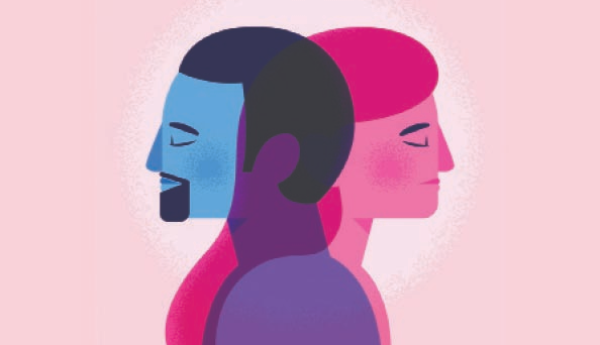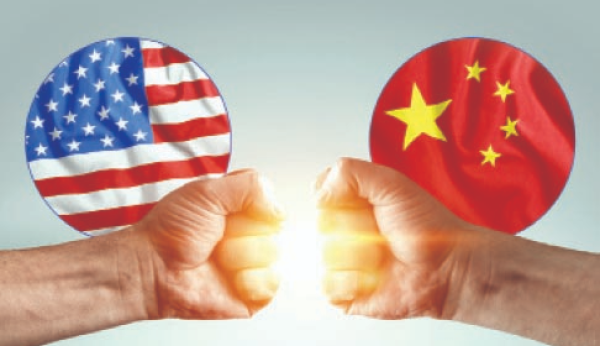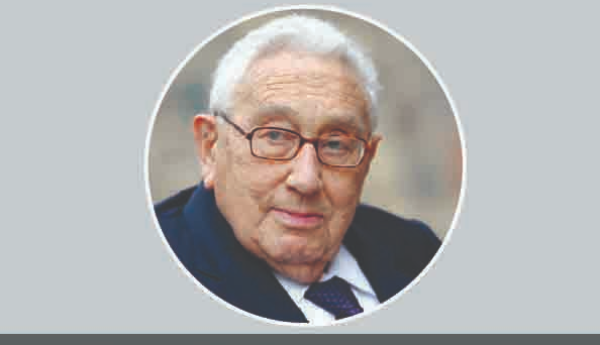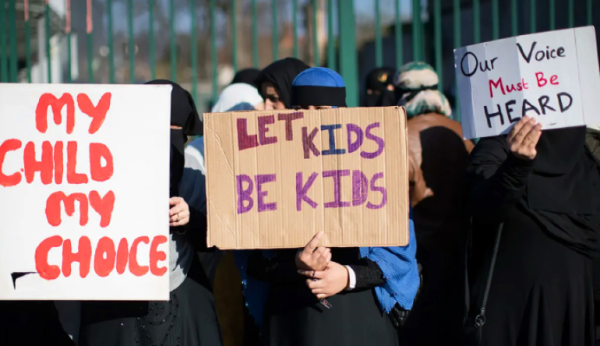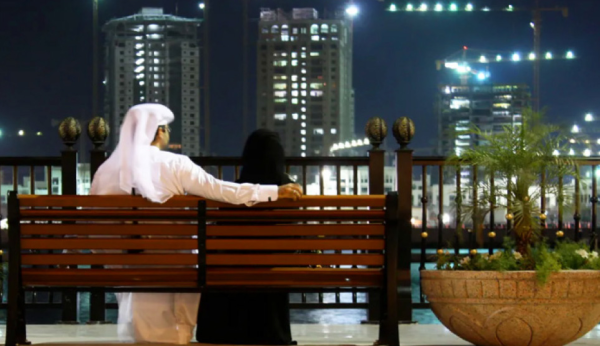The Rise of Hindu Nationalism in India
The Rise of Hindu Nationalism in India
The Rise of Hindu Nationalism in India
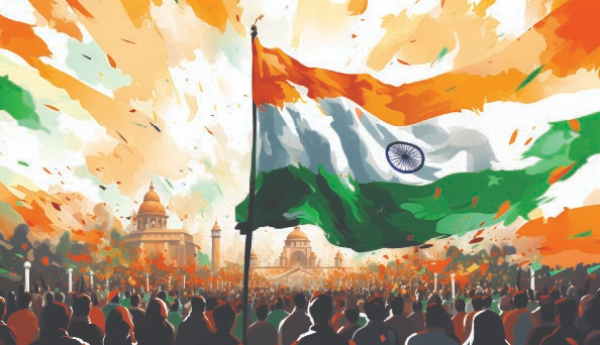
The rise of Hindu nationalism is a recent phenomenon in the neighboring country of India. It has resulted in some controversial laws, court verdicts, and the construction of Hindu ritual sites on the historically Muslim-owned establishment. The nationalism rises on the perception of Modi’s enchanted leadership, the political failures of the ruling BJP’s opponents, and the abuse of mainstream and social media on the basis of the unprecedented monetary involvement from the top-notch businessmen, who are reportedly affiliated with the ruling party.
Being regarded as the world’s biggest populous democracy and a secular state, India has witnessed the rise of fanaticism and ultra-Hindu nationalism in recent years. In the guise of a secular political trend, India’s ruling party, the BJP, an offspring of Rashtriya Swayamsevak Sangh (RSS), a Hindu nationalist platform, has been fulfilling its long-cherished dreams of forming a Ram Rajja (Hindu continent) by accomplishing various projects and goals.
India has become able to draw the attention of the world communities by enacting various anti-Muslim laws, by constructing Hindu projects on the side of historic Muslim establishments, and dominantly by subduing and suppressing the Muslims by various means. The list is too long. To the latest, we have observed the construction of a Ram Temple on the site of Babri Mosque, a historic Muslim architectural place in Ayodha in Uttar Pradesh, India.
Mir Baqi, a commander of the Mughal emperor Babur, constructed the mosque in 1528–1529 (935 AH). It has been a focus of dispute between the Hindu and Muslim communities since the 19th century. In 1992, a Hindu nationalist mob attacked and destroyed the mosque as part of a planned conspiracy, igniting intercommunal conflict throughout the Indian subcontinent. The Archaeological Survey of India conducted an excavation of the disputed site on the orders of the Allahabad High Court. The excavation period was short due to court time constraints, lasting only 15 days. The report of the excavation concluded that there were the ruins of “a massive structure” beneath the ruins of the mosque, which was “indicative of remains that are distinctive features found associated with the temples of north India,” but found no evidence that the structure was specifically demolished for the construction of the Babri Masjid.
On previous occasions, the Indian courts upheld justice to some extent but denied allocating a place for the Hindus to build a Hindu temple. But after the BJP came into power, they set a notorious example of executive interference. Besides, media hype was created in favour of establishing the temple. The Supreme Court, in a controversial verdict on November 19, 2019, quashed the lower court’s judgement and ordered the entire site (1.1 hectares or 2+3.4 acres of land) to be handed over to a trust to build the Hindu temple.
On August 5, 2020, the ground-breaking ceremony for the commencement of the construction of Ram Mandir was performed by Narendra Modi, Prime Minister of India. The Shri Ram Janmabhoomi Teerth Kshetra Trust oversaw the construction of the temple complex, and on January 22, 2024, Modi presided over the consecration ceremony and served as the main patron of the rituals. The state invited thousands of veterans and well-known Indians, including actors, athletes, business leaders, and celebrities from various fields, to attend this event, and they expressed their satisfaction over the recovery of the alleged birthplace of Rama, a significant Hindu deity.
This is just one single incident that was able to garner the attention of the majority of people across the globe. But the rise of Hindu nationalism in India became apparent through many other incidents as well. Just 7 days after the inauguration of the Ram temple in Ayodha on January 31, an Indian court weighed in on one of the country’s most sensitive religious disputes by permitting Hindu worshippers to pray inside a mosque in the city of Varanasi.
The Gyanvapi mosque is one of several Islamic houses of worship that Hindu activists, backed by Prime Minister Narendra Modi’s party, have sought for decades to reclaim for their religion.
The Mughal Empire constructed it in Varanasi in the 17th century, a city where Hindu devotees from all over the nation interred their loved ones by the Ganges River. The court in Varanasi ruled those Hindu worshippers—who believe the mosque replaced a destroyed temple to the deity Shiva—could pray in the building’s basement. Its verdict ordered district authorities to “make proper arrangements within the next seven days” to facilitate worshippers.
Executive interference is not only explicitly visible in the judicial process but also in other state apparatuses as well. This month, India’s official archaeological agency said a survey of the site appeared to corroborate the belief that the place of Gyanvapi Mosque was originally home to a temple, which they had never claimed in the past.
At the latest,at least five people have been killed and around 60 injured in police firings in Uttarakhand’s Haldwani, where a Madarsa was demolished by municipal authorities. At around 3:30 pm on February 8, 2024 (Thursday), authorities arrived with bulldozers to demolish ‘Malik keBagiche’ ka Madarsa. People on the ground claimed that they had neither been shown any order to demolish their sacred worship place nor were the authorities ready to listen to them. Locals said that the officials refused to show the documents of the demolition order for the Madarsa.
There were many political moves as well, i.e., the NRC, which also demonstrated the influence and dominance of Hindu nationalism in recent India. In December 2019, India passed a law that grants citizenship to religious minorities—except Muslims—from neighbouring countries, with legal experts saying it violates the country’s secular constitution. The new citizenship law, which was an amendment to 1955 legislation, allows Indian citizenship to “persecuted” minorities—Hindus, Sikhs, Buddhists, Jains, Parsis, Muslims, and Christians—from Bangladesh, Afghanistan, and Pakistan.
According to the experts, the law is discriminatory as it singles out Muslims in an officially secular nation of 1.3 billion people. Muslims form nearly 15 percent of the population. Critics point out that since Prime Minister Narendra Modi’s administration came to power, it has been pushing a Hindu supremacist agenda.
Alongside the verdict with Babri Mosque, another influence of Hindu nationalism upon the judiciary came into play when, in a major setback to Kashmiri political groups, India’s Supreme Court upheld a 2019 decision by Prime Minister Narendra Modi’s government to revoke special status for Indian-administered Kashmir, which gave it a degree of autonomy. The court hearings began in August 2023 on a petition filed by Kashmiri individuals and groups and finally came to an end in December of the same year.
The verdict is a big boost for the governing Hindu nationalist Bharatiya Janata Party (BJP) ahead of general elections due in May of that year. The 2019 decision by the BJP was a campaign promise to end Article 370, which granted special status to the disputed Himalayan region.
But such an upsurge of Hindu nationalism in India could never have been possible without the rise of the BJP. After being formed in 1951, initially for many years, the party struggled to convince the secular-minded people of India. They won only two seats in the 1984 general election; they grew in strength on the back of the movement around Ram Janmabhoomi in Uttar Pradesh. Following victories in several state elections and better performances in national elections, the BJP became the largest political party in the Parliament in 1996; however, it lacked a majority in the lower house of Parliament, and its government, under its then-leader Atal Bihari Vajpayee, lasted for only 13 days.
After the 1998 general election, the BJP-led coalition known as the National Democratic Alliance (NDA) under Prime Minister Vajpayee formed a government that lasted for a year. Following fresh elections, the NDA government—again headed by Vajpayee—lasted for a full term in office; this was the first non-Congress government to do so. In the 2004 general election, the NDA suffered an unexpected defeat, and for the next ten years, the BJP was the principal opposition party. Narendra Modi, then the chief minister of Gujarat, led the party to a landslide victory in the 2014 general election. Modi has since led the NDA government as Indian prime minister, including being re-elected in the 2019 general election. As of December 2023, the alliance governs 17 Indian states and union territories.
The role that ideas play in shaping the dynamics of India’s party system and, by extension, underlying voter behaviour has been surprisingly overlooked by most scholarly accounts of contemporary Indian politics. The ideological crosscurrents have led to the emergence of the Bharatiya Janata Party (BJP) as a heavyweight on India’s political stage.
Historically, the Congress Party’s reluctance under Nehru to make allowances for Hindu traditionalists helped motivate the Hindu right to politically organize outside of the Congress umbrella. In 1951, Shyama Prasad Mukherjee, a former member of Nehru’s cabinet, formally established the BJS as a Hindu nationalist alternative to the Congress secular establishment.
With an assist from the RSS, Mukherjee struck out on his own after concluding that the Hindu Mahasabha and the recently formed Ram Rajya Parishad (RRP) were both ill-suited to serve as the basis for a formidable Hindu nationalist political organ. In Mukherjee’s view, both existing outfits were too rigid in their approach to accommodating social concerns and the political interests of non-upper-caste Hindus. In its initial innings, the BJS was a relatively minor player. By 1967, however, the BJS (which later morphed into the BJP) had established itself as a significant political actor in its own right, claiming more than thirty seats in parliament and nearly 10 percent of the vote. In just fifteen years, it had syphoned off many of the Hindu Mahasabha’s and RRP’s voters.
Aside from the Hindu parties, Congress faced another challenge on its right flank from a party opposed to its statist policies. So, its opponent parties took a decisive stand against government controls, taxation, and general economic policy in the areas of industry and agriculture, respectively, and thus they started receiving huge public support.
The newly emergent BJP, under the leadership of Atal Bihari Vajpayee, pursued a moderate position, a decision that immediately provoked a response from the RSS and elements of the Sangh Parivar. Vajpayee’s decision to chart a middle path was most likely based on a strategic calculation intended to retain supporters of the erstwhile Janata Party that had joined the BJP. However, the RSS openly expressed its displeasure with the BJP’s moderate turn. But subsequently, the decision of Mr. Vajpayee served the party in the long run.
Being a deep-rooted Hindu nationalist party, the BJP has been the principal carrier for two, sometimes overlapping, groups of ideological conservatives: those who strenuously object to the politics of recognition and social classes who harbor deep misgivings about the prevailing politics of statism. 90 The contentious issue of constructing a Ram temple on the disputed site of a demolished mosque known as the Babri Masjid in Ayodhya, Uttar Pradesh, led to the BJP becoming the single-largest party in the Lok Sabha in the late 1990s and early 2000s, storming to power on the back of pro-Hindu majoritarian sympathies. Ultimately, the BJP’s 2014 victory was driven largely by the consolidation of ideological forces on two axes that govern party competition in India—the politics of statism and the politics of recognition.
It is difficult to overstate the role that Modi’s candidature played in the BJP’s 2014 approach. After serving as chief minister of Gujarat for more than a dozen years, Modi had cultivated an image as a “socially conservative majoritarian” who was also a “pro-business reformer” with an aversion to the heavy-handed form of statism favored by the Congress and its allies. An analysis of 2014 CSDS-Lokniti National Election Studies (NES) data suggests that the BJP’s victory benefited hugely from a “Modi effect.” Modi’s vows to eschew “tokenism” and “special privileges” resonated with Indian citizens who resented the politics of recognition, and his track record of lofty economic achievements in Gujarat drew voters who disliked state intrusions into the economic sphere.
With its landslide win in 2014, the BJP ushered in a far-reaching recalibration of the social coalitions that confer political influence in India. Following the 2014 general election, the BJP steadily expanded its electoral footprint and hidden Hindu nationalist agenda across India, especially in states where the party was not previously considered a viable option; along the
In this way, the party extended its reach across great swaths of the country. The BJP’s electoral juggernaut has prompted many observers of Indian politics to suggest that Indian politics is once again witnessing a dominant Hinduism.
India’s urban population is surging, and its economy is becoming more driven by the private sector than state-directed entities. This sea change is reshaping Indian voting coalitions and their views on issues of statism and recognition. Modi’s party has retained its aversion to state intrusions on social normative issues when it feels the state is unduly disrupting Hindu interests, although it draws a firm line against some Muslim customs (like the Islamic practice of instant divorce known as triple talaq).
Yet sometimes the BJP supports strong government intervention, like when it comes to
outlawing the slaughter of cows; the party maintains that killing cows violates Indian social customs. Presumably, electoral calculus undergirds this policy position. In pursuing this strategy, the BJP is framing voters’ choice at the ballot box as a bid in favor of the country’s Hindu majority (by siding with the BJP) or the Muslim community (by siding with the Congress Party and other competitors).
In August 2023, the European Parliament was debating a sharply worded resolution around the ongoing ethnic conflict in the northeastern state of Manipur, which started in May. Manipur is ruled by Modi’s Bharatiya Janata Party (BJP), but Modi had neither visited the region nor publicly made any appeal for peace when the resolution came up.
The resolution noted that “intolerance towards minority communities” had contributed to the violence that had claimed some 120 lives and left more than 50,000 displaced. It stopped short of naming the Modi government but barely disguised who it sought to blame for the violence, saying there “have been concerns about politically motivated, divisive policies that promote Hindu majoritarianism in the area.” The parliament approved the resolution.
Modi and the BJP used social media and misinformation to highlight their economic and political achievements and also polarize the Indian population. Consequently, by positioning Modi as the guardian of the Hindu population and the man who led economic growth and development in the country, Modi and the BJP were able to garner social control in India.
In late November, Ravish Kumar, one of India’s leading broadcast journalists, resigned from his job as senior executive editor of New Delhi Television Ltd. (NDTV), the last influential network still willing to cover Prime Minister Narendra Modi’s Hindu nationalist government critically. The move was prompted by the company’s ownership changing hands—from founders Prannoy and Radhika Roy to billionaire Gautam Adani, who at the time was the third richest man in the world and also has close ties to Modi.
Kumar’s resignation came hours after the Roys stepped down from NDTV’s board. It immediately started trending on social media, with former colleagues mourning the loss of a newsroom that trained some of India’s best journalists. The Deccan Herald, in an op-ed, called it the “demise” of NDTV, said it was a “sad day,” and added that “what is gained in money is lost in the nature and quality of journalism.” The Delhi Union of Journalists expressed deep disappointment at “the hostile takeover of the last independent mainstream TV channel.”
India’s media landscape has changed dramatically since 2014, when Modi and the Hindu nationalist Bharatiya Janata Party (BJP) came to power. In the nine years since, Modi has consolidated his grip on the government, in part by cracking down on independent media through police violence, tax investigations, threats to journalists, harassment campaigns, and suspending much-needed revenue from government advertising. But with Adani’s acquisition of NDTV, the last of India’s private news channels will fall under corporate ownership that is politically affiliated with Modi’s BJP ahead of the crucial 2024 elections. NDTV was one of the last bastions of free speech within the Indian broadcast media.
Right now, India’s oldest party Congress leader, Rahul Gandhi, has been driving one after one road marches called `Bharat Jodo Yatra’ and tries to involve the maximum number of people in his party endeavor. The influence of the Gandhi family is being considered another setback for the Congress Party itself, which had compelled Rahul Gandhi earlier to step down and hand over the party’s presidency to veteran Mallikarjun Kharge. However, the latest survey indicates that Rahul Gandhi has gained acceptance among the people in comparison to previous occasions, but still, he has to go a long way to defeat Narendra Modi and his encompassing leadership. International observers have different views about the sustainability of the Indian government; some of them also apprehend the disintegration of India, but as it is being observed, Hindu nationalism will continue to influence India and its status, at least for the time being.
References:
2. Chhibber and Verma, Ideology and Identity, 41
3. Pre-Poll Survey Findings (21 States),” April 2014, https://www.lokniti.org/media/PDF, “Does Exposure to Media Affect Voting Behavior and Political Preferences in Indian Elections?,” Economic and Political Weekly 49, no. 39 (September 27, 2014): 84.
7. https://foreignpolicy.com/2023/08/28/india-modi-diplomacy-bjp-hindu-nationalism-religion-manipur/
 Ali Ahmad Mabrur
Ali Ahmad Mabrur 

